
How to Use XIAO ESP32C3: Examples, Pinouts, and Specs
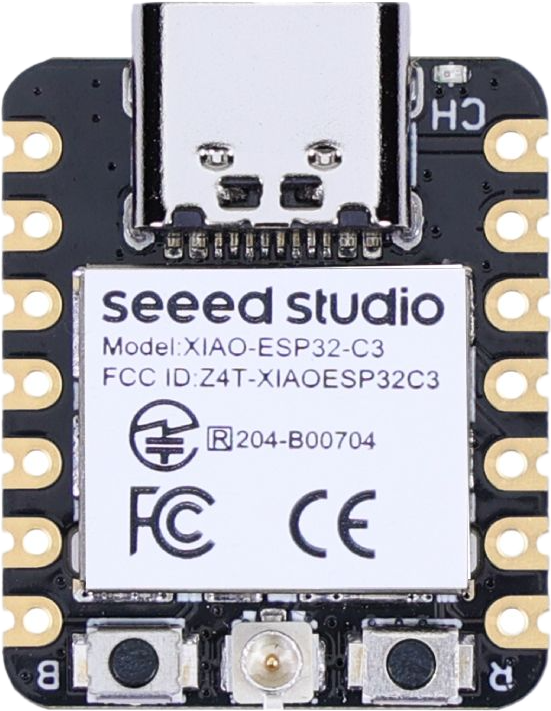
 Design with XIAO ESP32C3 in Cirkit Designer
Design with XIAO ESP32C3 in Cirkit DesignerIntroduction
The XIAO ESP32C3, manufactured by Seeed Studio, is a compact microcontroller board powered by the ESP32-C3 chip. This board features built-in Wi-Fi and Bluetooth Low Energy (BLE) capabilities, making it an excellent choice for Internet of Things (IoT) applications, smart devices, and wireless communication projects. Its small form factor and low power consumption make it ideal for portable and space-constrained designs.
Explore Projects Built with XIAO ESP32C3
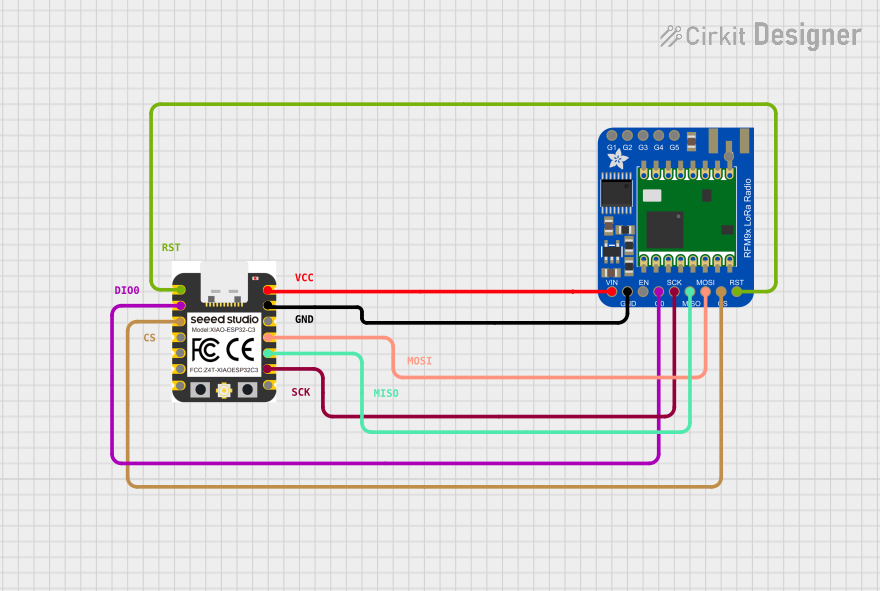
 Open Project in Cirkit Designer
Open Project in Cirkit Designer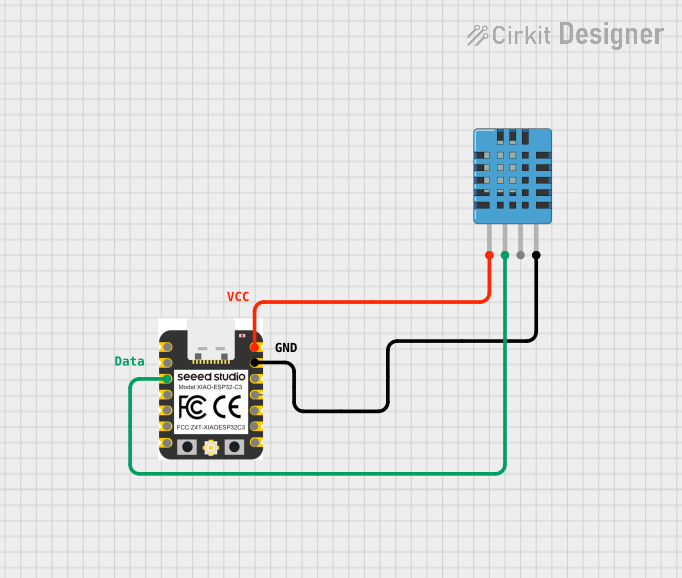
 Open Project in Cirkit Designer
Open Project in Cirkit Designer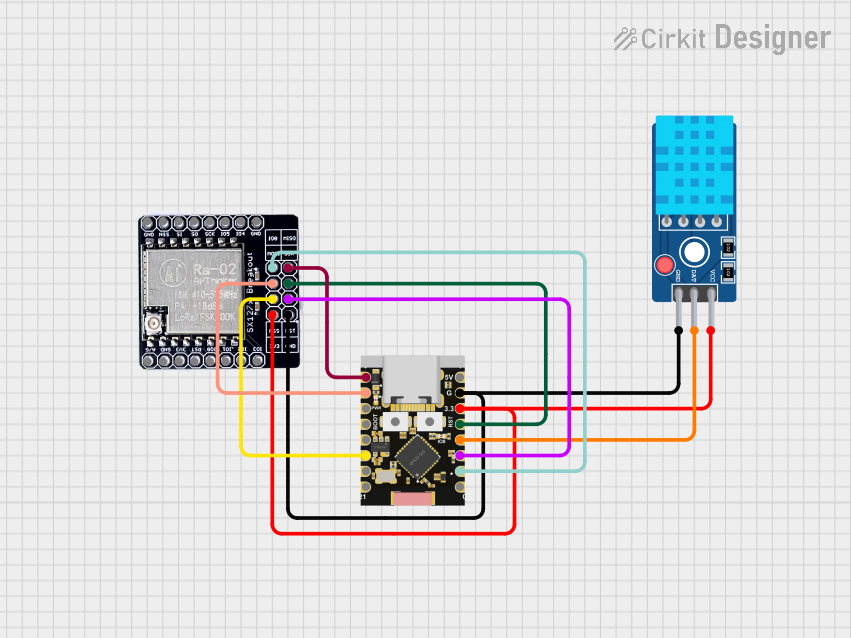
 Open Project in Cirkit Designer
Open Project in Cirkit Designer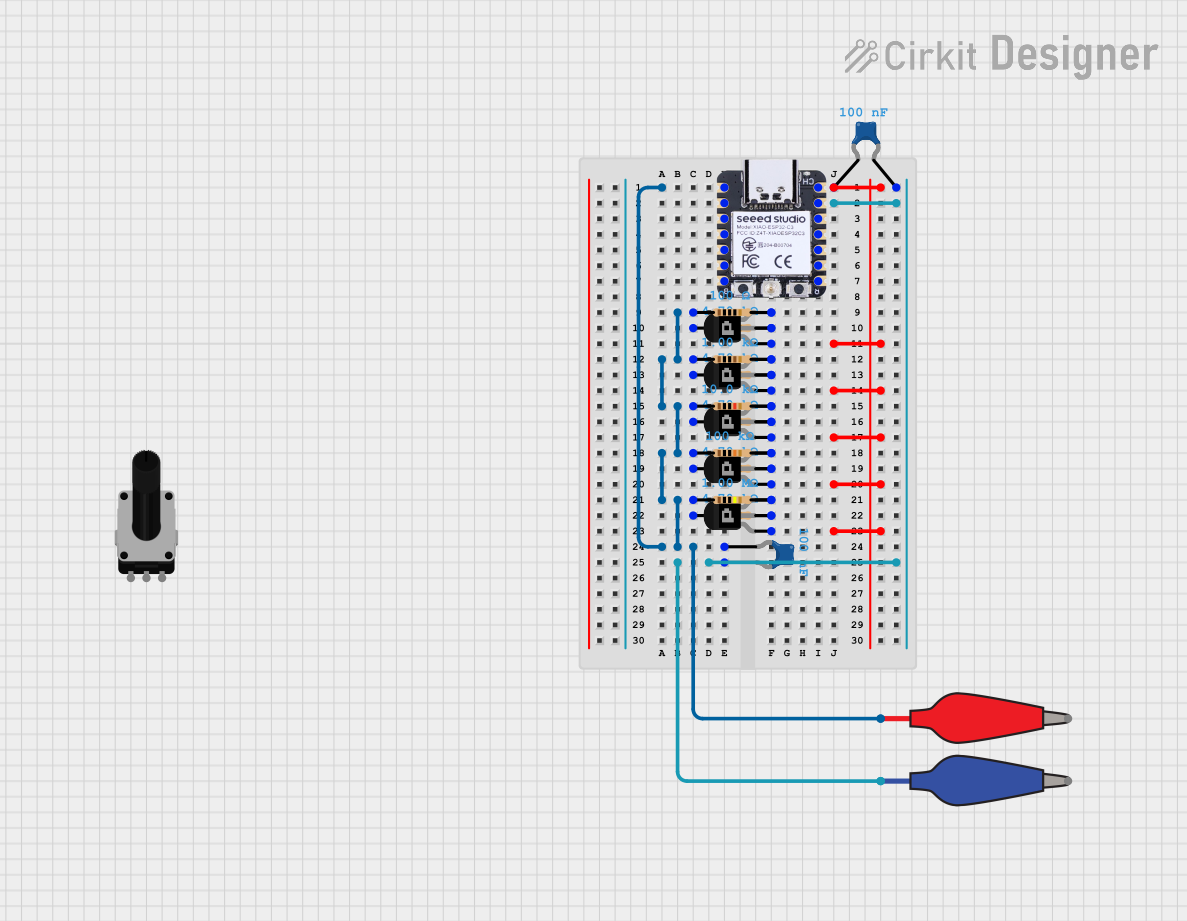
 Open Project in Cirkit Designer
Open Project in Cirkit DesignerExplore Projects Built with XIAO ESP32C3

 Open Project in Cirkit Designer
Open Project in Cirkit Designer
 Open Project in Cirkit Designer
Open Project in Cirkit Designer
 Open Project in Cirkit Designer
Open Project in Cirkit Designer
 Open Project in Cirkit Designer
Open Project in Cirkit DesignerCommon Applications
- IoT devices and smart home automation
- Wireless sensor networks
- Wearable technology
- Remote monitoring and control systems
- Prototyping for Wi-Fi and BLE-enabled projects
Technical Specifications
The XIAO ESP32C3 is designed to deliver high performance in a small package. Below are its key technical details:
Key Features
- Microcontroller: ESP32-C3 (RISC-V 32-bit single-core processor)
- Clock Speed: Up to 160 MHz
- Flash Memory: 4 MB
- SRAM: 400 KB
- Wireless Connectivity: Wi-Fi (802.11 b/g/n) and Bluetooth 5.0 (BLE)
- Operating Voltage: 3.3V
- Input Voltage Range: 5V (via USB-C) or 3.3V (via pins)
- Power Consumption: Ultra-low power in deep sleep mode
- Dimensions: 21 x 17.5 mm
- Interface: USB-C, UART, I2C, SPI, ADC, PWM, GPIO
Pin Configuration and Descriptions
The XIAO ESP32C3 has 11 GPIO pins, which are multifunctional and can be configured for various purposes. Below is the pinout description:
| Pin Name | Function | Description |
|---|---|---|
| 3V3 | Power Supply | 3.3V power output for external components. |
| GND | Ground | Common ground for the circuit. |
| D0 | GPIO0 / ADC / PWM | General-purpose I/O, analog input, or PWM output. |
| D1 | GPIO1 / ADC / PWM | General-purpose I/O, analog input, or PWM output. |
| D2 | GPIO2 / ADC / PWM | General-purpose I/O, analog input, or PWM output. |
| D3 | GPIO3 / ADC / PWM | General-purpose I/O, analog input, or PWM output. |
| D4 | GPIO4 / ADC / PWM | General-purpose I/O, analog input, or PWM output. |
| D5 | GPIO5 / UART / I2C / SPI | General-purpose I/O, UART, I2C, or SPI communication. |
| D6 | GPIO6 / UART / I2C / SPI | General-purpose I/O, UART, I2C, or SPI communication. |
| D7 | GPIO7 / UART / I2C / SPI | General-purpose I/O, UART, I2C, or SPI communication. |
| D8 | GPIO8 / UART / I2C / SPI | General-purpose I/O, UART, I2C, or SPI communication. |
| RST | Reset | Resets the microcontroller. |
Usage Instructions
The XIAO ESP32C3 is easy to integrate into your projects. Below are the steps to get started and important considerations:
Getting Started
Install the ESP32 Board Package:
- Open the Arduino IDE.
- Go to
File > Preferencesand add the following URL to the "Additional Board Manager URLs" field:https://dl.espressif.com/dl/package_esp32_index.json - Go to
Tools > Board > Boards Manager, search for "ESP32," and install the package.
Connect the XIAO ESP32C3:
- Use a USB-C cable to connect the board to your computer.
- Select the correct board (
XIAO_ESP32C3) and port in the Arduino IDE.
Upload a Test Sketch:
- Use the example code below to test the board's functionality.
Example Code: Blink an LED
// This example code blinks the onboard LED of the XIAO ESP32C3.
// The onboard LED is connected to GPIO10.
#define LED_PIN 10 // Define the onboard LED pin
void setup() {
pinMode(LED_PIN, OUTPUT); // Set the LED pin as an output
}
void loop() {
digitalWrite(LED_PIN, HIGH); // Turn the LED on
delay(1000); // Wait for 1 second
digitalWrite(LED_PIN, LOW); // Turn the LED off
delay(1000); // Wait for 1 second
}
Important Considerations
- Power Supply: Ensure the board is powered with 3.3V or 5V via USB-C. Exceeding the voltage limits may damage the board.
- GPIO Voltage Levels: The GPIO pins operate at 3.3V logic levels. Avoid applying 5V directly to the pins.
- Deep Sleep Mode: Use deep sleep mode to minimize power consumption in battery-powered applications.
- Antenna Placement: Avoid placing metal objects near the onboard antenna to ensure optimal wireless performance.
Troubleshooting and FAQs
Common Issues and Solutions
Board Not Detected in Arduino IDE:
- Ensure the correct USB driver is installed for the XIAO ESP32C3.
- Check the USB cable (some cables are power-only and do not support data transfer).
Upload Fails with Timeout Error:
- Press and hold the
BOOTbutton on the board while uploading the sketch. - Ensure the correct COM port is selected in the Arduino IDE.
- Press and hold the
Wi-Fi or Bluetooth Not Working:
- Verify that the antenna area is not obstructed.
- Check the Wi-Fi or BLE configuration in your code.
Board Overheating:
- Ensure the board is not drawing excessive current from peripherals.
- Use proper heat dissipation techniques if necessary.
FAQs
Q: Can I power the XIAO ESP32C3 with a battery?
A: Yes, you can power the board with a 3.7V LiPo battery connected to the 3V3 and GND pins.Q: Does the board support OTA (Over-the-Air) updates?
A: Yes, the ESP32-C3 chip supports OTA updates for firmware.Q: Can I use the XIAO ESP32C3 with MicroPython?
A: Yes, the board is compatible with MicroPython. You can flash the MicroPython firmware to use it.Q: What is the maximum Wi-Fi range?
A: The range depends on environmental factors but typically extends up to 50 meters indoors and 200 meters outdoors.
By following this documentation, you can effectively use the XIAO ESP32C3 in your projects and troubleshoot common issues.